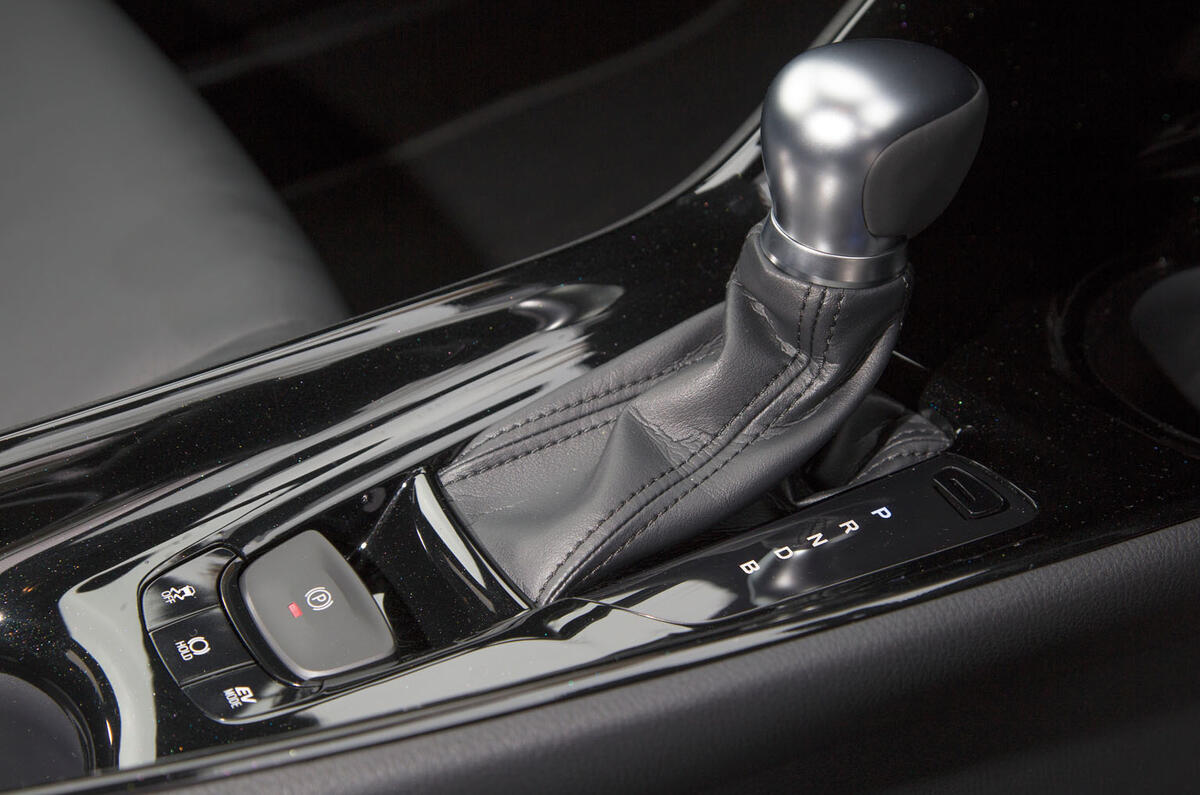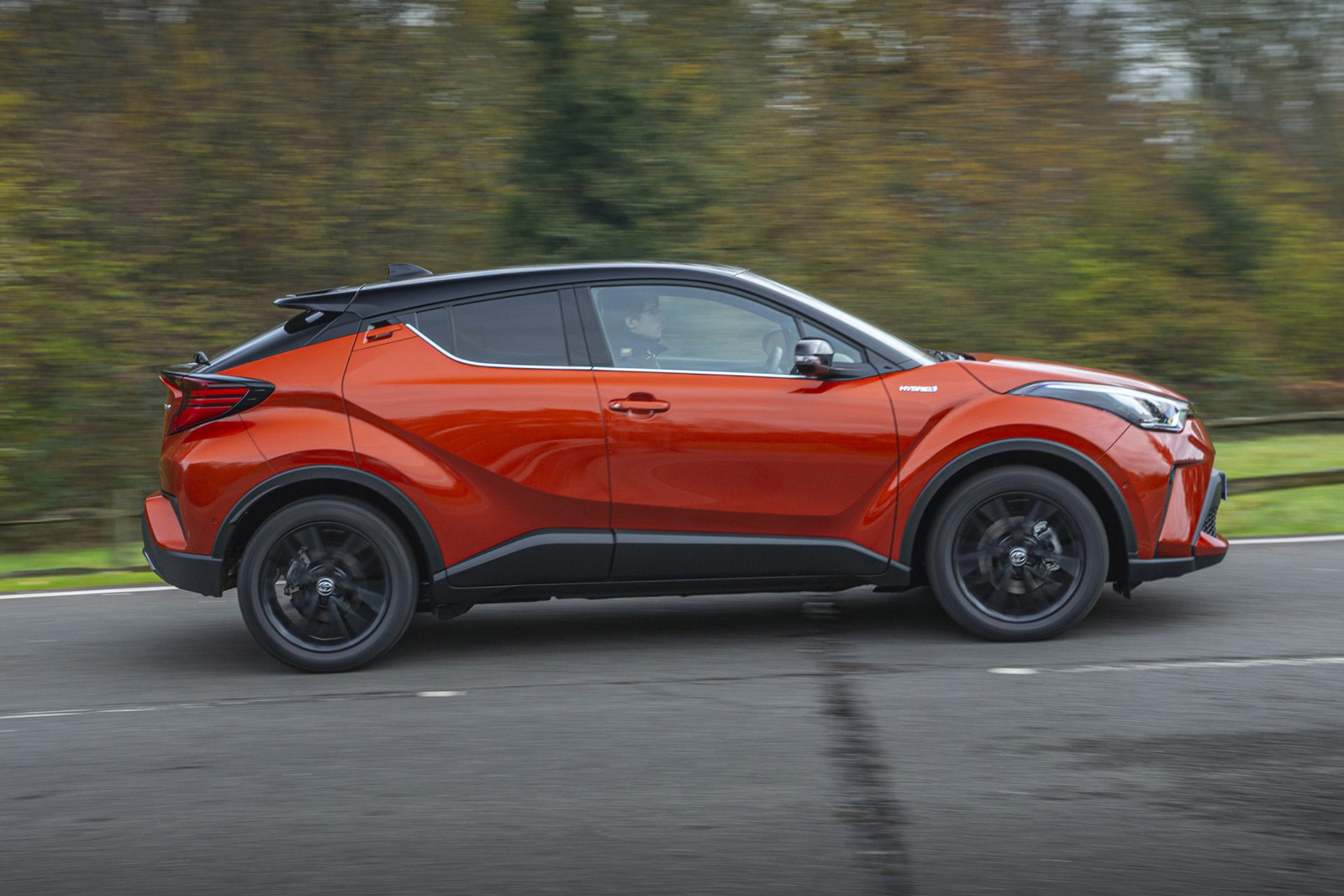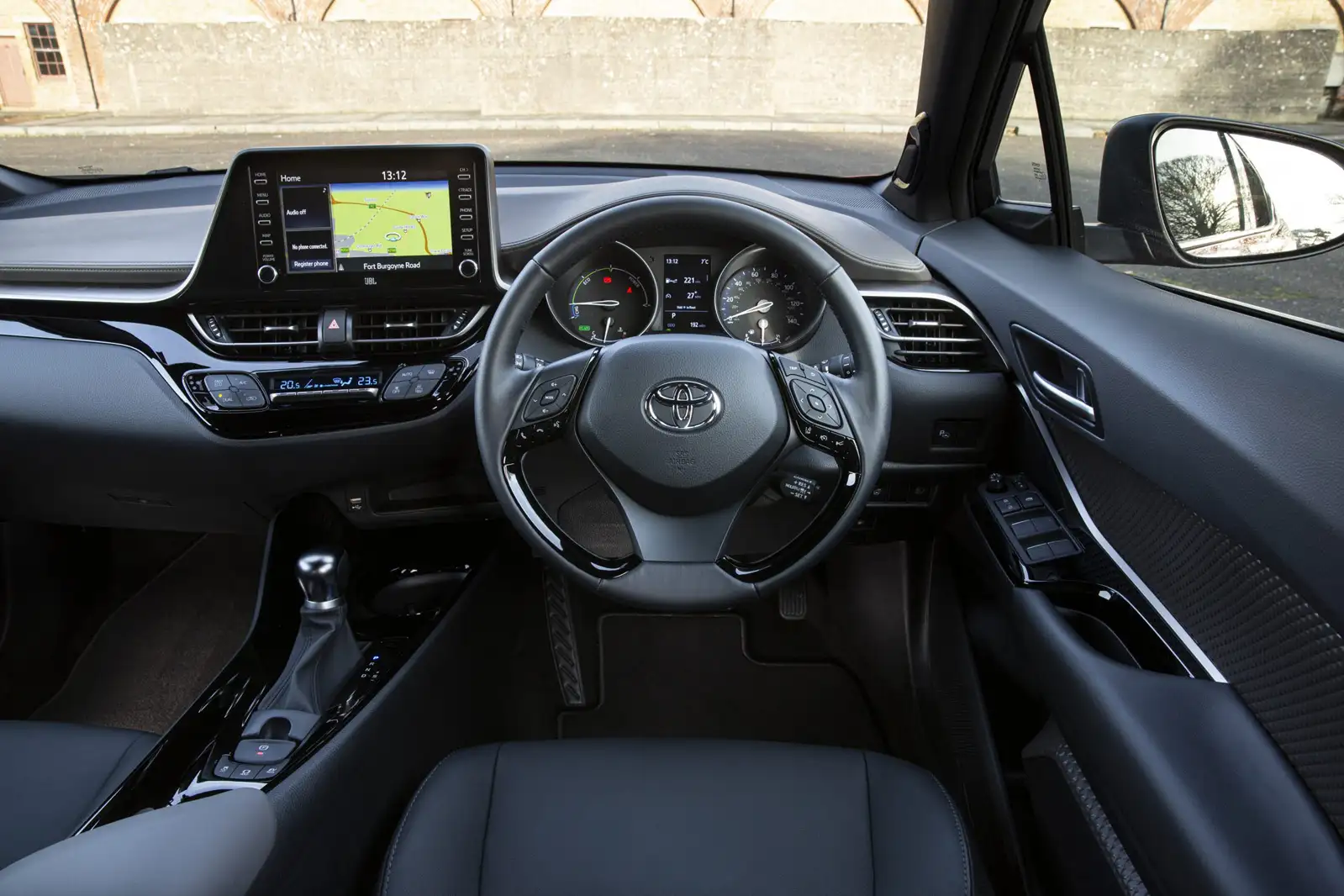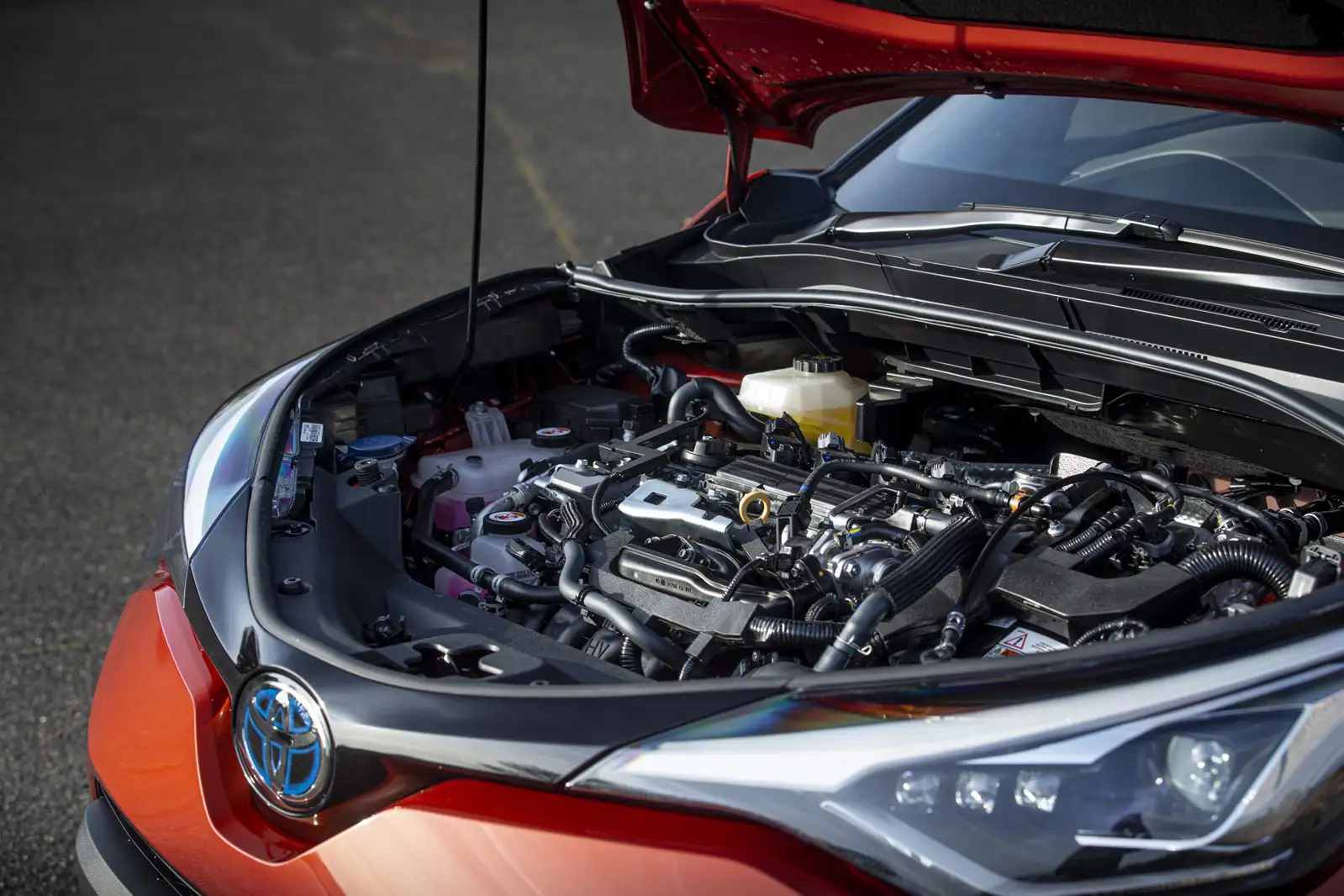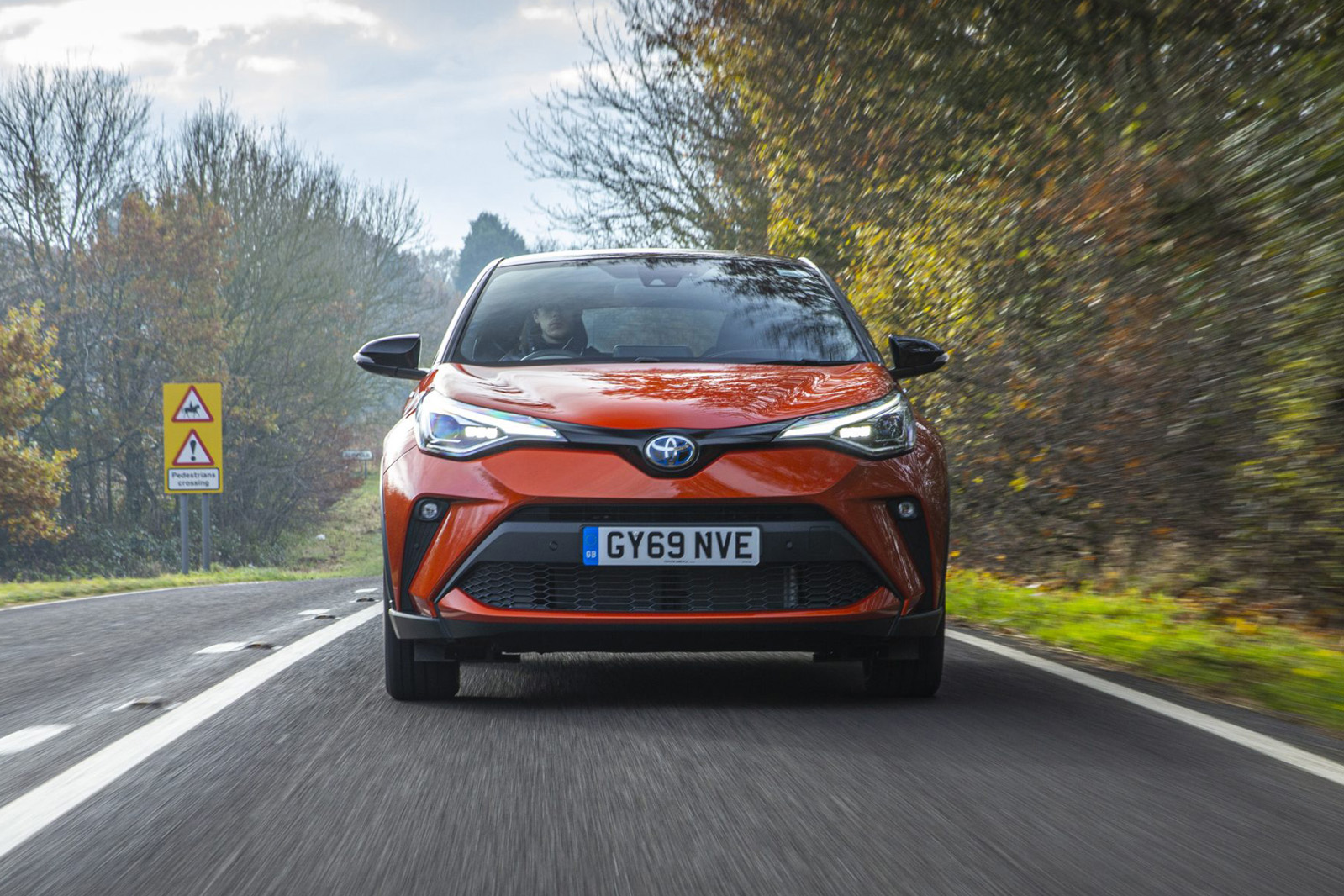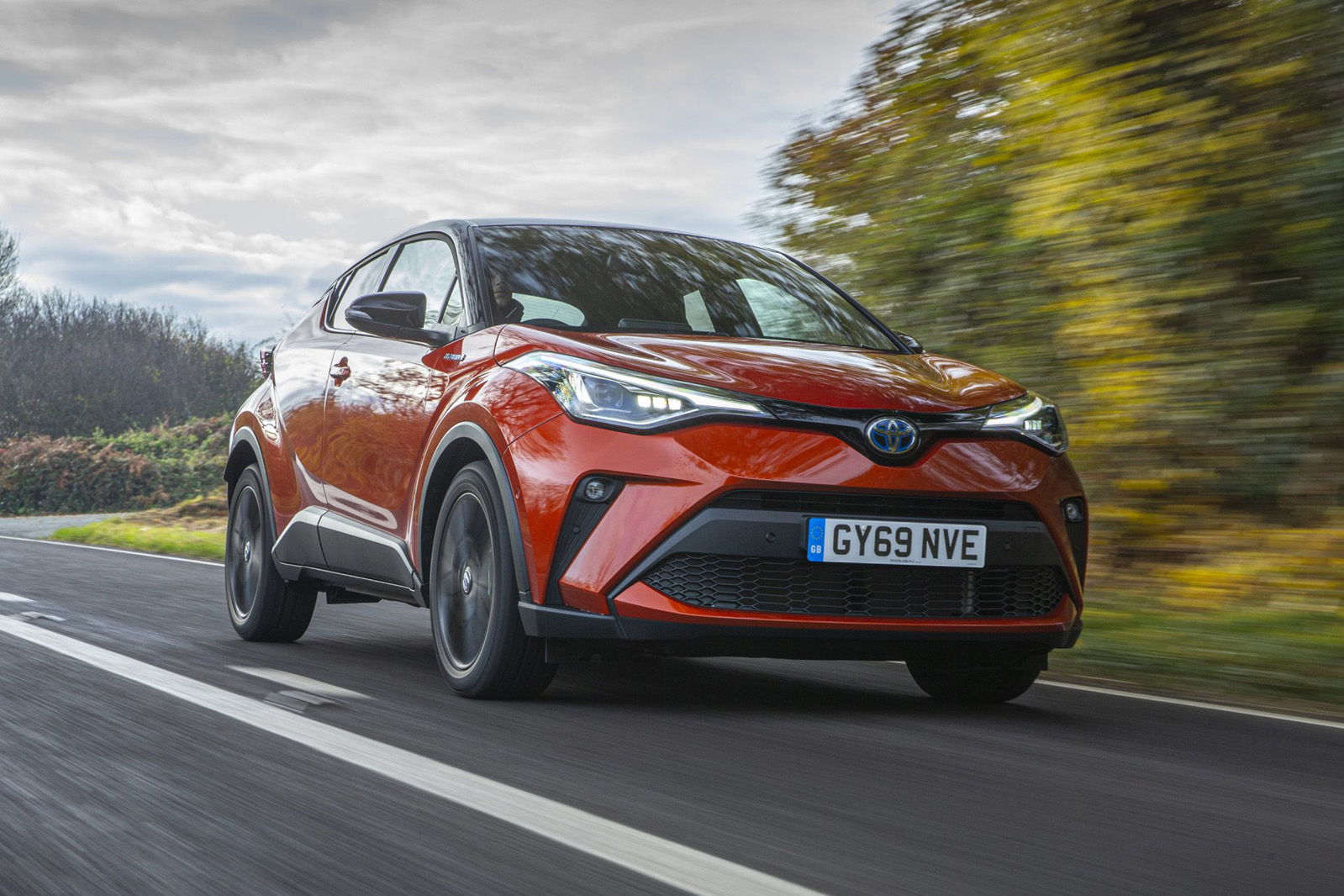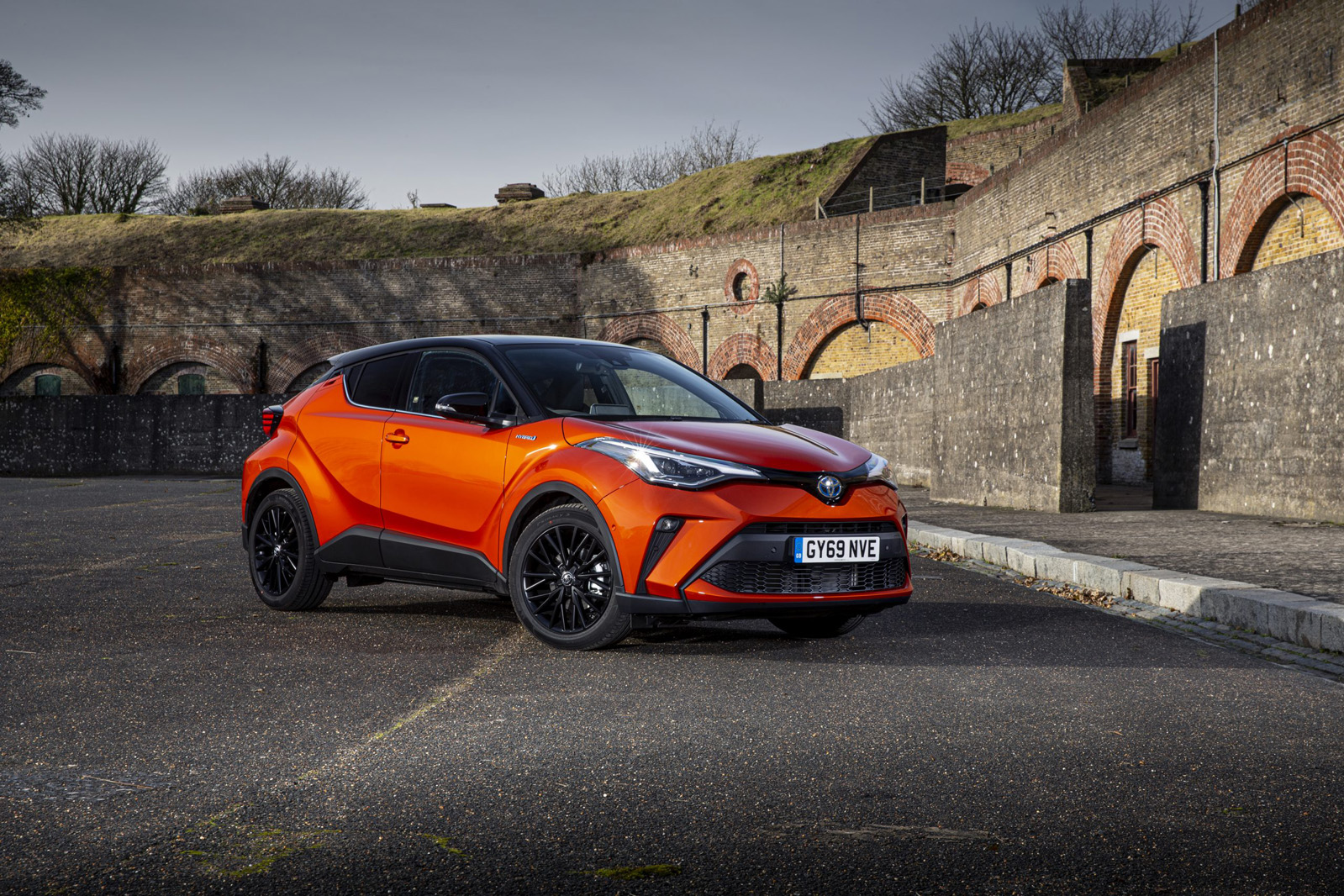Despite its lower-than-the-average-crossover hip point, the C-HR still has a driver’s seat that you slide directly on to rather than bending down to access it.
The A-pillars and roofline trace quite close to your head as you sit at the wheel, so this isn’t a car to recommend to a particularly tall driver.
Head room is even more limited in the back, but leg room is generous enough in both rows. For a smaller adult or teenager sitting in the back seats, the high and tapering window line will make it feel more claustrophobic than it really is.
We can perhaps afford to leave reservations about the C-HR’s practicality to one side, though, given that this car is aiming to appeal for its sense of style rather than outright space.
And having done that, we’re left with a fairly comfortable, entirely pleasant, solidly built and consistently well-finished interior that shows evidence of thoughtful design and the same stylish flourish that distinguishes the exterior.
An asymmetrical fascia is a time-honoured trick for making a car feel instantly driver-focused, and the C-HR’s similarly-designed layout runs beyond the waterfall stack to the centre console below.
Above, the integration of an 8.0in infotainment screen as a protrusion from the dashboard has allowed Toyota to keep the car’s fascia volumes low and preserve a sense of space up front.
Toyota has used plenty of high-gloss piano black plastic as interior decoration, about which we’re ambivalent. It’s very eye-catching and on trend but shows up dust and fingerprints.
In front of and behind the gear selector are deep, teardrop-shaped cupholders whose clever design more easily admits a mug with a handle than a round one will, and under the centre armrest is an equally deep storage cubby with a 12V power outlet contained within.
The one thing you can’t miss in here is the effort made by Toyota to ensure a high-quality material finish. The tactile quality of the C-HR’s switchgear, its careful location and its designed look is sufficiently impressive that the car could probably pull off a Lexus badge without too much trouble.
Even the entry Icon comes with a full array of driver aids in the form of Toyota Safety Sense 2, which includes autonomous braking, pedestrian detection and adaptive cruise control. There are also LED headlamps and dual zone climate control.
Infotainment and sat-nav
The 8.0in Toyota Touch 2 infotainment system is standard equipment on this £26,890 model, and includes Apple CarPlay and and Android Auto, as well as a reversing camera and DAB radio.
Design trim adds the Toyota Touch 2 with Go system that uses the same-sized screen but also brings with it online connectivity options that work through your smartphone’s data connection and add real-time traffic information via TomTom.
It also gives you Google Street View and allows you to browse fuel prices, weather reports and parking availability at your destination. The navigation mapping isn’t displayed in brilliant detail and the system isn’t particularly quick to respond to fingertip inputs. We’d still prefer an auxiliary input device.
Also featured on the Design are upgrades such as heated seats, keyless entry and ambient interior lighting. There’s also a handy hands-free self-parking system and front and rear parking sensors.
At the top of the range are the luxurious Excel and the more racily designed GR Sport. The former gets leather trim for the seats, a heated steering wheel and adaptive LED headlamps. For the GR Sport there’s a subtle body kit, 19-inch alloys and an interior that’s gets perforated leather for the steering wheel and a smattering of red stitching.
Both these models are available with Toyota’s optional JBL premium audio system, which has 10 speakers and 576 watts of power and comes as part of the £1595 Premium Pack. It sounds strong but not outstandingly so, particularly by the standards of premium brands.














